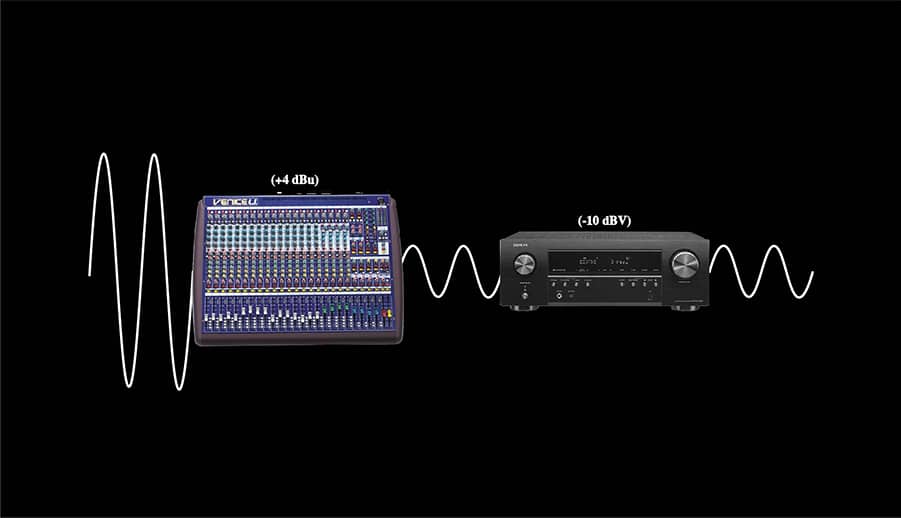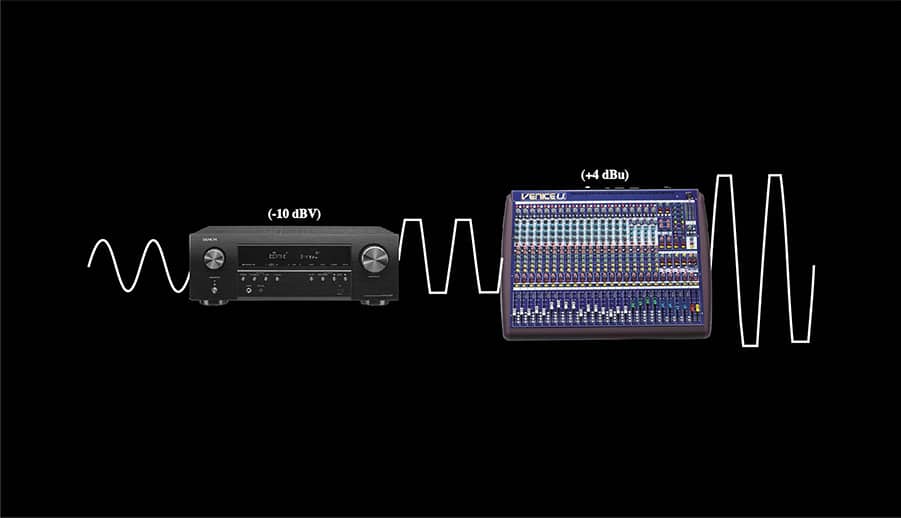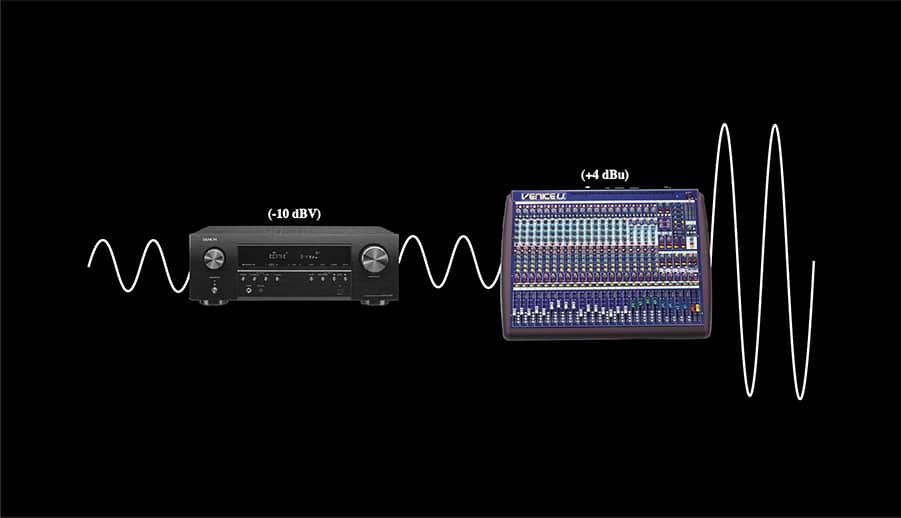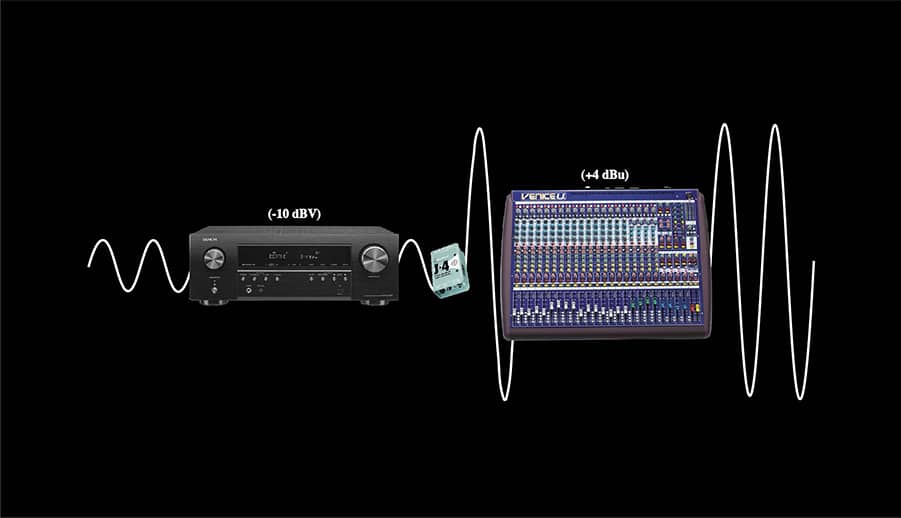In this post, you’ll learn about line level audio. Specifically, the difference between line level standards for consumer and professional audio equipment.
What is the difference between professional line level audio and consumer line level audio?
The line level standard for professional audio is +4 dBu, which is about 12 dB greater than the consumer line level standard of -10 dBV. The difference between them is actually about 12 dB. 11.7825, to be exact.
Audio Signal Levels
In a previous post about audio signal levels, I wrote about the basic audio signal types: mic level, instrument level, line level, and speaker level.
I recommend reading that post first to quickly learn about the different types of audio signal levels.
Line Level Standards
In the post mentioned above, you learned that line level is used to send signals from one device to another, such as mixers, compressors, and amplifiers.
There are actually two standards for defining line level, depending on the equipment you’re using. The two standards are usually classified as “consumer” and “professional”.
Consumer Line Level Audio (-10 dBV)
The standard operating level for consumer audio equipment is -10 dBV.
0 dBV is equal to 1 volt. -10 dBV is 10 decibels lower than 1 volt, which is .316 volts.
Blu-Ray players, CD players, and most home stereo systems operate on the -10 dBV consumer standard.
Professional Line Level Audio (+4 dBu)
The standard operating level for professional audio equipment is +4 dBu.
0 dBu is equal to .775 volts. +4 dBu is 4 decibels greater than .775 volts, which is 1.228 volts.
Most professional mixing consoles, signal processors, and amplifiers operate on the +4 dBu professional standard.
Professional Level (+4 dBu) vs Consumer Level (-10 dBV)
You may intuitively think that +4 dBu is 14 dB greater than -10 dBV. The difference between them is actually about 12 dB. 11.7825, to be exact. That’s because they don’t share the same 0 dB reference point.
As I said before: 0 dBV is equal to 1 volt and 0 dBu is equal to .775 volts
For an apples to apples comparison, let’s convert -10 dBV into dBu. That gives us -7.7825 dBu.
The difference between +4 dBu and -7.7825 dBu is 11.7825 dB.
If you find this very confusing, you’re not alone. To learn more about decibels and how they work, check out this post I wrote on The Only 5 Things You (Probably) Need to Know About Decibels.

Why Is Professional vs Consumer Level Important?
So, what does all of this mean on a practical level?
First, professional equipment is designed to send and receive signals that are about 12 dB greater than the signals used in consumer audio.
On the other hand, consumer equipment is designed to send and receive signals that are about 12 dB lower than the signals used in professional audio.
Keep this in mind when connecting consumer and professional equipment as a part of a single system.
When sending a signal from a professional device to a consumer device, either decrease the output of the professional device or use a signal pad between the two devices.
If you don’t decrease the level, the signal might overload the input of your consumer equipment.

When sending a signal from a consumer device to a professional device, you can’t increase the output of the consumer device without clipping. Instead, boost the signal at the input of the professional device or use an inline signal level driver.


Here is a professional-quality inline signal level booster on Amazon, called the Radial J+4.
But remember, increasing the signal level will also increase the noise floor.

